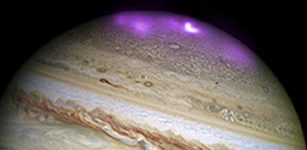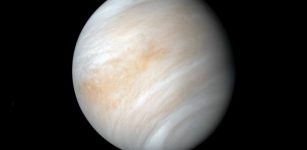Hubble Observes Comet 2I/Borisov – New Interstellar Visitor
Eddie Gonzales Jr. – MessageToEagle.com – On 12 October 2019, the NASA/ESA Hubble Space Telescope provided astronomers with their best look yet at an interstellar visitor — Comet 2I/Borisov — which is believed to have arrived here from another planetary system elsewhere in our galaxy.
 Comet 2I/Borisov. Credits: NASA, ESA, D. Jewitt (UCLA)
Comet 2I/Borisov. Credits: NASA, ESA, D. Jewitt (UCLA)
This observation is the sharpest view ever of the interstellar comet. Hubble reveals a central concentration of dust around the solid icy nucleus.
Comet 2I/Borisov is only the second such interstellar object known to have passed through our Solar System. In 2017, the first identified interstellar visitor, an object dubbed ‘Oumuamua, swung within 38 million kilometers of the Sun before racing out of the Solar System.
“Whereas ‘Oumuamua looked like a bare rock, Borisov is really active, more like a normal comet. It’s a puzzle why these two are so different,” David Jewitt of UCLA, leader of the Hubble team who observed the comet, said in a press release.
As the second interstellar object found to enter our Solar System, the comet provides various invaluable insights. For example, it offers clues to the chemical composition, structure, and dust characteristics of a planetary building block presumably forged in an alien star system a long time ago and far away.
“Because another star system could be quite different from our own, the comet could have experienced significant changes during its long interstellar journey. Yet its properties are very similar to those of the Solar System’s building blocks, and this is very remarkable,” said Amaya Moro-Martin of the Space Telescope Science Institute in Baltimore, Maryland.
Hubble photographed the comet at a distance of approximately 420 million kilometers from Earth [1]. The comet is travelling toward the Sun and will make its closest approach to the Sun on 7 December, when it will be twice as far from the Sun as Earth. It is also following a hyperbolic path around the Sun and is currently blazing along at the extraordinary velocity of over 150 000 kilometers per hour. By the middle of 2020, the comet will be on its way back into interstellar space where it will drift for millions of years before maybe one day approaching another star system.
Written by Eddie Gonzales Jr. – MessageToEagle.com Staff










